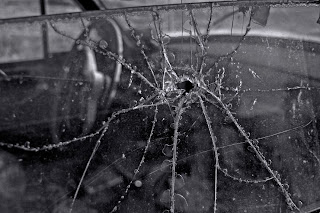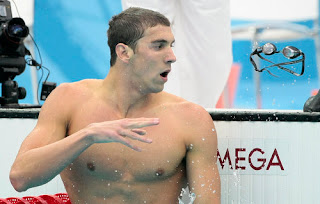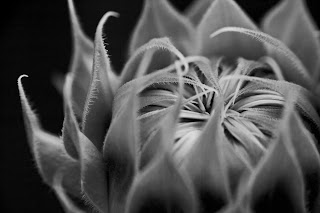The Barefoot Photographer®
Sunday, August 31, 2008
Fall Photo Shows
This Saturday, September 6, there is a launch party for Arts & Expressions magazine at Dogwood Gallery in Tyrone. The magazine is in its 6th year and is coming out with a whole new look. It is very exciting. A couple of my photos are featured in the “Gifts by Hand” section of the magazine – so I will definitely be there and the photos featured in the magazine will be hanging for the party. If you are in the area, come to the party, it starts at 6:30.
Greg Blair at Dogwood has been taking care of all of my framing needs lately. He is great to deal with and I love that gallery! It is quite a jewel to have in Fayette County. Check out the website www.dogwoodgallery.net
The next event after the magazine launch party is Slow Exposures in Concord. I will be at the show September 19 & 20. Greg has just about completed the framing for this show for me. I have to take the framed pieces to Zebulon prior to September 13. I am very excited about Slow Exposures. Slow Exposures is open September 19-21 and 26-28.
And now, the new competition comes after Slow Exposures at the Arts Clayton Gallery in Jonesboro. This show will hang at the gallery for the month of October. The opening reception for this show is October 2. For more information on Arts Clayton and the show, you can visit their website at www.artsclayton.org/gallery.
This is the first year I submitted images for both Slow Exposures and Arts Clayton. I am pleased to have made it into both shows.
In November I will be participating in a joint show with a local potter. We have talked about a doing a show together for quite a while – and now it is going to happen. The dates for this show are November 16-18 and at will be at The Hollingsworth House in Fayetteville. When the details are worked out and the website for the show is up and running – I will provide more information here.
In addition to all of these shows, this week I begin the fall session of digital photography and photo editing classes at the Fayette Senior Services Center. These classes end the week before Thanksgiving.
It is going to be a busy fall!
Saturday, August 23, 2008
Michael C. Carlos Museum

This past week I visited the Michael C. Carlos Museum on the Emory University campus in Atlanta. Not many people know of this museum. It has been around for quite a while. The collections at Emory date back to 1876. I am not sure when it became known by the current name. The building that houses the museum now was designed by Michael Graves. The photography policy here is no flash and none in the traveling exhibit. In the regular collection found on the first floor, I got some pretty good shots. The only lens I took with me was the Lensbaby. You can tell by looking at this photo the left side has that "Lensbaby slur." Next time I visit I think I will take my 50mm 1.4, it is good in low light and, well, no flash means low light. I did bump up my ISO to 800 since I was handholding and wanted to minimize handshake. The lighting is dim in the exhibit halls.
The website for the Carlos Museum is http://www.carlos.emory.edu/ and the website for detailed information on the Tut exhibit is http://www.kingtut.org/.
If anyone reading is interested – tomorrow – August 24 – I will be at The Veranda Inn B&B in Senoia at 3pm for a program on preserving, duplicating, and restoring old photos.
Monday, August 18, 2008
Proper Camera Settings
When you are taking photos are you so concerned with the settings that you can sometimes miss the shot or lose the idea?
Some photographers are very technical – they have a need to know all the settings to use when and where and then on top of that – they want to know why! What do I say to that? I say why worry about the "proper settings" and spend a little time on a spectacular composition!
When someone asks me "What settings do I use for (fill in the blank)?" Well – it is not such an easy answer. First, and the toughest part, is that I have no idea what their vision of the photo is. Their vision and idea that they wish to capture makes all the difference in how to approach settings for a certain shot. Add to this that usually the person asking me that wants a certain fstop and shutter speed that should deliver to them the perfect photo for the place, time, and idea.
I can't tell you. I can't even tell me – I take test shots to get a sense of what I have and where I am going with the photo at that moment.
Outdoors – let's think – the lighting varies from hour to hour and day to day. If you have a little cloud cover at noon on Wednesday your settings will be different than a cloudless sky on Friday. In July, 4 p.m. is very different than 4 p.m. in November. Indoors it is a little easier – but it depends heavily on the lighting you have. If I have no clue of the lighting in a space – how can I give a ballpark?
Don't be afraid to take the time to test shoot a couple photos. Look at the photo you get. Do you want lighter? Should it be darker? Is your subject in focus the way you want it. Now I know that little screen on the back of the camera can lie to you. Mine has lied to me plenty of times. I think I have something wonderful and then after I see it on the computer I realize that it is not so nice. If it is just an issue of the exposure being off – that is an easy fix with software. If my depth of field is not the best – then I just have to plan a reshoot. It is funny that seems like a major inconvenience now. But just think about when we all worked with film. You would have to reshoot something – but you would not figure that out as quickly as you can now. Now – if you have your computer handy – you can shoot something over right away.
OK – so what about the times you don't want to have to have a reshoot. What about when you won't get that chance. My suggestion is that if it is very important and you are very leery of you manual setting abilities – go for a more auto-type setting – like "portrait," "landscape," or whatever. The whole camera is your tool – all of the settings – even those dreaded "autoish" ones. People who look down their noses at someone who does not always shoot manual are – well – silly! A good cheat for going manual when you are unsure is to first put the camera on auto -- even take a shot. Notice the shutter speed and fstop the camera uses. Then review the image on the screen. If you want to do something different (and you probably will), use a more manual setting to tweak the auto a bit.
Don't be afraid to experiment when you have the opportunity – that is learning. If you have a time crunch or and once in a while shot – don't worry about going more auto. Always review your EXIF data to see the settings for those photos you love. Remember them, if for nothing other than a starting place, for when you are presented with a similar situation.
Saturday, August 16, 2008
Slow Exposures

The show opens Friday, September 19 at noon. The opening reception is Saturday, September 20 at 1:30pm. The Slow Exposures Ball is Saturday, September 20 at 7:00pm. Tickets are $50 per person and available by calling 770-567-3600. In addition to the framed pieces priced to sell, this year the show is offering print sales. You can order the print and it will be shipped to you by the artist. Also available, for the second year, is a book of the photos in the show.
In addition to these events – there are many other happenings associated with Slow Exposures. For full details and the story behind the show you can check out their website www.slowexposures.org.
Wednesday, August 13, 2008
Timing Can Be Everything

Watching all of the other events – while watching the sport action – I am also noticing the camera gear in the background. At one event (gymnastics I think) there was such a sea of cameras – it seemed the scene went on and on for quite a bit of space. The photographers are packed in tightly together too! It makes me wonder how they can breathe being so close to each other. I guess the photographers are not claustrophobic. Or, if they are, they are dealing with it in order to get the one great shot.
How can one person come away with that one great shot when so many are going after the same thing at the same time? There are certain athletes that are big names and draws for the cameras. You know when they are in action they have so many lenses focused on them – and the continuous shooting modes – these guys must be burning through the memory cards!
When you are taking photos with a group, it can be difficult to get a photo of “your own.” I have listened to the podcast of Brooks Jensen tell about submissions they receive at Lenswork. He says with many of the portfolios received, he can tell whose workshop someone has been to. So how do you stand out, be unique, not look like everyone else?
Part of it is timing. There is always that one person at an event that snaps at just the right moment to capture the split second something happens. It could be a news event – like when Jack Ruby shot Oswald. I have heard interviews with a photographer who took the photo just after that famous photo was taken. He told of how his friend, colleague, competitor, had shot his photo just a split second before he did. Of course the photo timing and the angle made that one photo famous. Many of the photos that stand out in our minds seem to come from big news events. These images make the memories of the events for us.
For me – the images of the Olympics are pretty predicable. The gymnast in poses and on an apparatus, the cyclists on bikes, boxers, runners, etc; all of these people are doing what is expected. Last night I was watching the swimming. Of course I saw Michael Phelps win another race. There are hundreds, if not thousands, of photos of Phelps swimming, warming up, stretching, etc. – doing what is usual and expected.
Today I saw a photo of Phelps that is very unexpected and I find it interesting. An AP photographer by the name of Itsuo Inouye captured the moment when Phelps finished the race. In this particular race, the 200 meter butterfly, he had experienced a problem with his goggles. They were filling with water and he was unable to see. The photo taken after the race tells the story of his feeling for those goggles! Timing on that photo was everything. The goggles are caught in flight. I first saw this photo on The Drudge Report this morning. I have searched to find the photographer to give proper credit.
Thursday, August 7, 2008
Sunflower Buds

Last spring I planted several large pots with sunflower seeds. I had a heck of a time getting the squirrels and chipmunks to leave the sprouting seeds alone. There are a few sunflowers getting close to blooming. There is one on the deck that is the largest and it is blooming now.
Last weekend I took quite a few photos of the bud as it was just opening. These are some of my favorite photos of the summer. One of the members of the photo club made a comment on Flickr that the photos showed movement. They do! When I look at them I see a crab's mouth parts moving as it gathers tiny bits of food.
The challenge with these photos and anything outside this time of year is the humidity. As soon as I stepped out onto the deck to take the photos – my camera fogged up. I used a microfiber cloth to clear the lens and snapped a couple as the lens was fogging over again. Those are kind of interesting.
The best thing to do – and I did this then and on another morning – is to set up the camera on the tripod or set it on a table and leave it for a few minutes. The other morning, I came back into the house to get a glass of water. After a little while, you return and the lens is clear. On a super humid day the cool camera lens will have the moisture in the air condense on it. Once the lens and camera comes to the same temperature as the outdoors, the condensation ends.
I am going to send one of the sunflower bud photos in to go with this blog. If you don't see a photo with the blog, check back later to look for it. I think flower buds make as good (sometime better) photos than the flowers!
